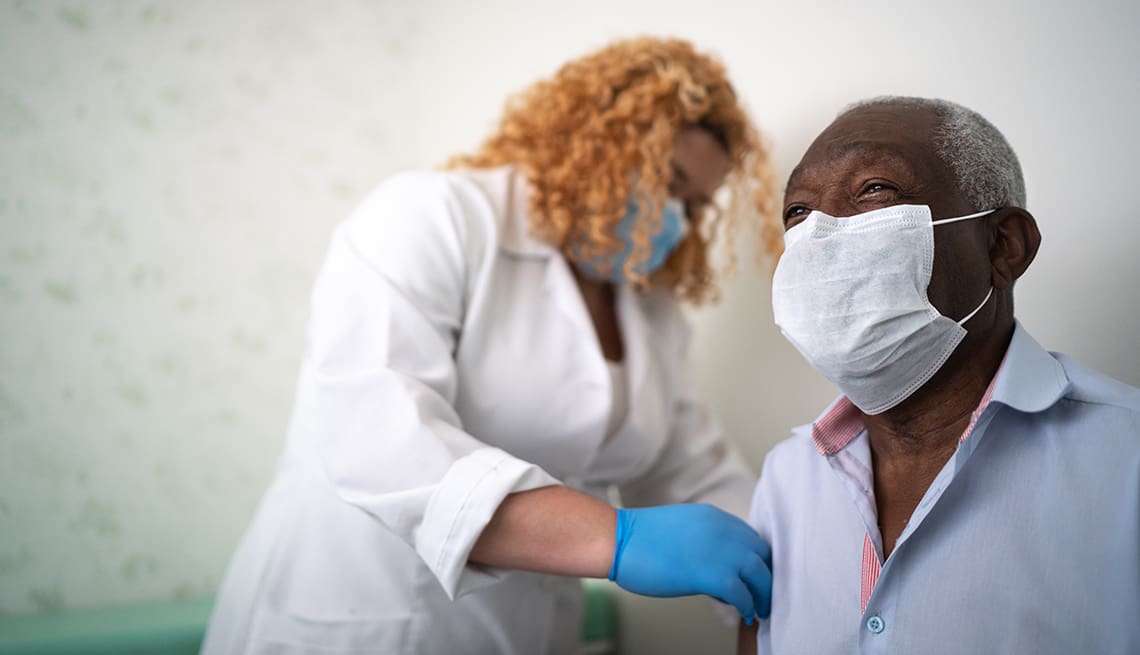Blood cancers, such as leukemia, lymphoma, and myeloma, are a big threat to public health. The Leukemia and Lymphoma Society says that, in the US, one person is diagnosed with a blood cancer every 3 minutes. Unfortunately, almost 156 people each day will die from one of these diseases.1
Blood cancers affect people of all races. But, Black communities bear a much higher burden of these diseases.2 As with many cancers, the 5-year survival rate is lower among Black people. But, for multiple myeloma, Black patients had better survival than white patients.3 This was when they were treated equally.
This isn’t just chance. It’s a complex issue rooted in many factors. These factors include socioeconomic gaps, lack of access to good healthcare, and genetics. Highlighting these factors increases awareness of possible barriers to care and how to overcome them.
Types of Blood Cancers
Blood cancers interfere with the normal function of blood, bone marrow, or the lymph system. Changes in these blood cells reduce the body’s ability to fight infections, control bleeding, or transport oxygen.
Treatment for blood cancers depends on the type of blood cancer and its stage. Treatment options may include chemotherapy, radiation therapy, stem cell transplantation, targeted therapies, and immunotherapy, among other approaches. Let’s review three main types of blood cancer: leukemia, lymphoma, and myeloma.
Leukemia
Leukemia affects the blood and bone marrow. Changes in your genes cause abnormal blood cells to multiply rapidly. This disrupts the function of normal blood cells. It becomes harder for your body to fight off infection as leukemia progresses.
The four main types of leukemia include4:
-
- acute lymphoblastic leukemia (ALL)
-
- acute myeloid leukemia (AML)
-
- chronic lymphocytic leukemia (CLL)
-
- chronic myeloid leukemia (CML)
Leukemia affects people of all ages, but some are more common in specific populations. For example, ALL is often seen in children versus CML, which is more common in adults over 65.
Several studies5 show Black populations are diagnosed with leukemia at lower rates compared to other populations. Yet, AML causes death in young black adults more often within five years. This is compared to whites, even with similar treatment.6 In recent years, treatment options for AML have improved and increased survival rates for black people.7
Lymphoma
Lymphomas are cancers that involve the abnormal growth of lymphocytes, a type of white blood cell. These cells are responsible for helping to fight off infections. There are two main types of lymphoma: Hodgkin lymphoma and non-Hodgkin lymphoma.
Many of the signs and symptoms of various types of lymphomas are similar. But, they differ regarding who is most commonly affected and when. For Black people, lymphoma diagnoses are less common, but overall survival rates are lower.1,8,9 These cancers seem to be more aggressive in the Black population, leading to early death.
Myeloma
Multiple myeloma is a cancer that forms in plasma cells, a white blood cell found in the bone marrow. Myeloma can result in the overproduction of abnormal plasma cells, leading to the weakening of bones and the suppression of normal blood cells. Like leukemia, multiple myeloma alters your body’s ability to fight infections.
Multiple myeloma is not only twice as common in Black people, but it’s also twice as deadly compared to white people.10 Genetics plays a key role in a multiple myeloma diagnosis. However, other modifiable risk factors, such as access to appropriate treatment and awareness of multiple myeloma among patients and providers, also increase disparities.
Unequal Impact on Black People
The unequal rates of survival among Black people for blood cancers highlight there’s a significant problem that needs to be addressed. Yet, to find solutions, we must understand why this is happening.
Treatment Disparities
Access to quality healthcare is an ongoing issue for several reasons, such as geographic location or financial constraints. Unfortunately, Black patients are most often impacted. Key factors contributing to decreased survival rates for Black people include:
-
- Limited access to specialized treatment centers and advanced therapies
-
- Lack of representation in clinical trials
-
- Inadequate or lack of health insurance
-
- Unreliable transportation
-
- Stereotypes, prejudices, and discrimination
Addressing these disparities requires targeted policies to improve access to healthcare for all individuals, regardless of their racial or socioeconomic background.
Genetic and Biological Factors
Outside factors aren’t the only thing leading to lower survival rates in Black people with blood cancers. Genetic and biological factors also play a role in disparities. Certain genetic variations are potential risk factors for blood cancers.11
For example, specific gene mutations may increase the chance of having leukemia, lymphoma, or myeloma.11 But, the connection between genes and the environment is complex. Not all people with genetic risks will get blood cancers.
Disparities in Treatment Response
Biological factors can also contribute to disparities in treatment outcomes. Variations in how drugs are broken down affect response to therapies. Drug resistance, tumor makeup, and immune response matter too. They may also affect how individuals respond to specific treatments.
Some groups may have differences in immune function. This affects their ability to fight cancer or respond to treatment. For those with variations in human leukocyte antigen (HLA) genes, it can impact the success of stem cell transplantation and immunotherapy in blood cancer.12
Improving Health Outcomes for Black People
Addressing blood cancer disparities in Black communities requires a multifaceted approach. Any chance to raise awareness about blood cancers, especially in Black people, could help improve health outcomes. It could also raise survival rates. Solutions from the local to national level include:
-
- Community Outreach Programs
Community outreach programs aim to raise awareness about blood cancers, promote early detection, and provide resources for accessing healthcare services. Often, this information can be specifically tailored to Black communities.
-
- Culturally Tailored Education Campaigns
Tailored education campaigns address specific cultural beliefs, language preferences, and healthcare literacy levels within Black communities. Research shows these programs have successfully improved health outcomes for chronic conditions.13 They could offer the same support for those with blood cancers.
-
- Financial Assistance Programs
Financial barriers impact access to healthcare. Offering financial aid helps reduce the cost of blood cancer treatment. It ensures that money problems do not block access to needed care.
-
- Policy Advocacy for Healthcare Access
Advocating for policy changes works at local, state, and federal levels. It improves healthcare access and addresses issues affecting health outcomes. Policies that expand Medicaid, enhance health insurance coverage, and invest in community-based healthcare help reduce disparities. This ensures that more people have access to prevention and treatment services.14 It’s especially true in underserved communities.
-
- Diversification of Clinical Trials
Promoting diversity in trials ensures that new treatments work for everyone. Efforts should be made to increase the representation of Black individuals in research studies.15 Connect with us to find out how you can get involved.
Promoting diversity in trials ensures that new treatments work for all people. Efforts should be made to increase the representation of Black individuals in research studies.
The Bottom Line
The disparities in leukemia, lymphoma, and multiple myeloma outcomes among Black communities are complex. They’re influenced by a mix of genetic, biological, economic, and systemic factors.
Efforts to improve survival rates are underway, but more work remains. Expanding awareness through community outreach programs and policy changes can help eliminate differences. But, we need you and your community to help by volunteering to participate in clinical trials.
Join our community to learn more about blood cancers and their impact on the Black community.
Conversations Starters:
-
- How do you feel about the fact that the 5-year survival rate is lower for Black people, and what do you think can be done to address this disparity?
-
- What surprised you most about survival rates among Black people with blood cancers?
-
- What other solutions do you feel would help to improve survival rates for Black people?
Resources:
- Leukemia and Lymphoma Society. Facts and Statistics. tlls.org. Published March 3, 2015. https://tlls.org/facts-and-statistics/facts-and-statistics-overview/facts-and-statistics
- American Cancer Society. Cancer Disparities in the Black Community. www.cancer.org. Accessed January 24, 2024. https://www.cancer.org/about-us/what-we-do/health-equity/cancer-disparities-in-the-black-community.html#:~:text=Prostate%20cancer%20death%20rates%20in
- Dong J, Garacci Z, Buradagunta CS, et al. Black patients with multiple myeloma have better survival than white patients when treated equally: a matched cohort study. Blood Cancer J. 2022;12(2):34. Published 2022 Feb 24. doi:10.1038/s41408-022-00633-5
- Leukemia: Symptoms, Types, Causes & Treatments. Cleveland Clinic. https://my.clevelandclinic.org/health/diseases/4365-leukemia#symptoms-and-causes
- Zhao Y, Wang Y, Ma S. Racial Differences in Four Leukemia Subtypes: Comprehensive Descriptive Epidemiology. Sci Rep. 2018;8(1):548. Published 2018 Jan 11. doi:10.1038/s41598-017-19081-4
- Young Black Patients with AML Face Significantly Worse Outcomes than White Patients of the Same Age – Hematology.org. www.hematology.org. https://www.hematology.org/newsroom/press-releases/2022/young-black-patients-with-aml-face-significantly-worse-outcomes-than-white-patients-of-the-same-age
- Survival rates of black patients with leukemia soar with modern therapies. News-Medical. Published December 11, 2023. https://www.news-medical.net/news/20231211/Survival-rates-of-black-patients-with-leukemia-soar-with-modern-therapies.aspx#:~:text=The%20predicted%20two%2Dyear%20overall
- Ermann DA, Vardell V, Fitzgerald L, Shah H, Stephens DM, Hu B. Racial disparities affecting Black patients with diffuse large B-cell lymphoma. Journal of Clinical Oncology. 2022;40(16_suppl):7507-7507. doi:https://doi.org/10.1200/jco.2022.40.16_suppl.7507
- Vaughn JL, Spies D, Xavier AC, Epperla N. Racial disparities in the survival of patients with indolent non‐Hodgkin lymphomas in the United States. American Journal of Hematology. 2021;96(7):816-822. doi:https://doi.org/10.1002/ajh.26198
- Kanapuru B, Fernandes LL, Fashoyin-Aje LA, et al. Analysis of racial and ethnic disparities in multiple myeloma US FDA drug approval trials. Blood Adv. 2022;6(6):1684-1691. doi:10.1182/bloodadvances.2021005482
- Blood Cancer Risk & Prevention. www.uchicagomedicine.org. Accessed January 24, 2024. https://www.uchicagomedicine.org/cancer/types-treatments/blood-cancers/risk-prevention
- Morishima Y, Morishima S, Stevenson P, et al. Race and Survival in Unrelated Hematopoietic Cell Transplantation. Transplantation and Cellular Therapy. 2022;28(7):357.e1-357.e6. doi:https://doi.org/10.1016/j.jtct.2022.03.026
- Singh, H., Fulton, J., 4th, Mirzazada, S., Saragosa, M., Uleryk, E. M., & Nelson, M. L. A. (2023). Community-Based Culturally Tailored Education Programs for Black Communities with Cardiovascular Disease, Diabetes, Hypertension, and Stroke: Systematic Review Findings. Journal of racial and ethnic health disparities, 10(6), 2986–3006. https://doi.org/10.1007/s40615-022-01474-5
- Patel MI, Lopez AM, Blackstock W, et al. Cancer Disparities and Health Equity: A Policy Statement From the American Society of Clinical Oncology [published correction appears in J Clin Oncol. 2020 Nov 20;38(33):3976]. J Clin Oncol. 2020;38(29):3439-3448. doi:10.1200/JCO.20.0064
- Gormley N, Fashoyin-Aje L, Locke T, et al. Recommendations on eliminating racial disparities in multiple myeloma therapies: a step toward achieving equity in healthcare. Blood Cancer Discov. 2021;2(2):119-124. doi:10.1158/2643-3230.BCD-20-0123



